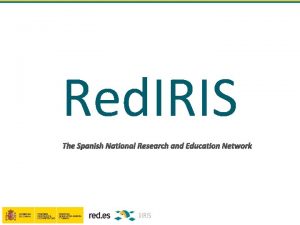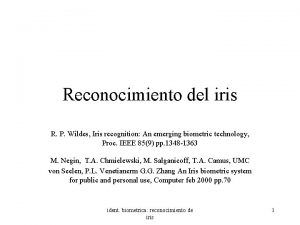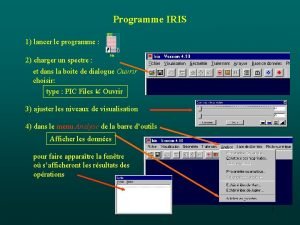Grouping Iris z Charis P Principles of grouping














- Slides: 14

Grouping Iris z Charis P

Principles of grouping • The Principles of grouping are a set of principles in psychology, first proposed by Gestalt psychologists to account for the observation that humans naturally perceive objects as organized patterns and objects.

These principles exist because the mind has an innate disposition to perceive patterns in the stimulus based on certain rules. These principles are organized into six categories: Proximity, Similarity, Closure, Good Continuation, Common Fate, and Good Form.

Proximity • The principle of proximity states that, all else being equal, perception tends to group stimuli that are close together as part of the same object, and stimuli that are far apart as two separate objects.

For this reason, people tend to see clusters of dots on a page instead of a large number of individual dots.

Similarity • The principle of similarity states that, all else being equal, perception lends itself to seeing stimuli that physically resemble each other as part of the same object, and stimuli that are different as part of a different object.


Closure • The principle of closure refers to the mind’s tendency to see complete figures or forms even if a picture is incomplete, partially hidden by other objects, or if part of the information needed to make a complete picture in our minds is missing.


Good Continuation • When there is an intersection between two or more objects, people tend to perceive each object as a single uninterrupted object. This allows differentiation of stimuli even when they come in visual overlap. We have a tendency to group and organize lines or curves that follow an established direction over those defined by sharp.


Common Fate • When visual elements are seen moving in the same direction at the same rate, perception associates the movement as part of the same stimulus. This allows people to make out moving objects even when other details (such as the objects color or outline) are obscured. This ability likely arose from the evolutionary need to distinguish a camouflaged predator from its background.

two flocks of birds can cross each other in a viewer's visual field, but they will nonetheless continue to be experienced as separate flocks because each bird has a direction common to its flock.

Good Form • The principle of good form refers to the tendency to group together forms of similar shape, pattern, color, etc. Even in cases where two or more forms clearly overlap, the human brain interprets them in a way that allows people to differentiate different patterns and shapes.



























